For the longest time, programming languages were skills expected from a select few computer developers that excelled in their fields to bring the latest in software and push the boundaries of technology. I’m sure most would agree that today, programming languages are expected in almost all positions in software development companies and taught as part of the school curricula worldwide, with Python development at the core of it.
The abundance of programming languages today has enabled most people to learn and familiarize themselves with multiple languages anytime. Python is often one of the most sought-after of the bunch and remains the language to learn on various bucket lists globally, with Statista claiming it to have a 48% usage share globally.
In this post, we’ll go over an in-depth analysis of the Python language, its strengths and weaknesses, and when its deployment makes sense in a functional and developmental environment. By reading this post, you’ll be well-versed on all things Python and whether it is the language for you to learn in 2024.
Let’s get right into it with a brief overview of the Python programming language.
What is the Python Development Language?
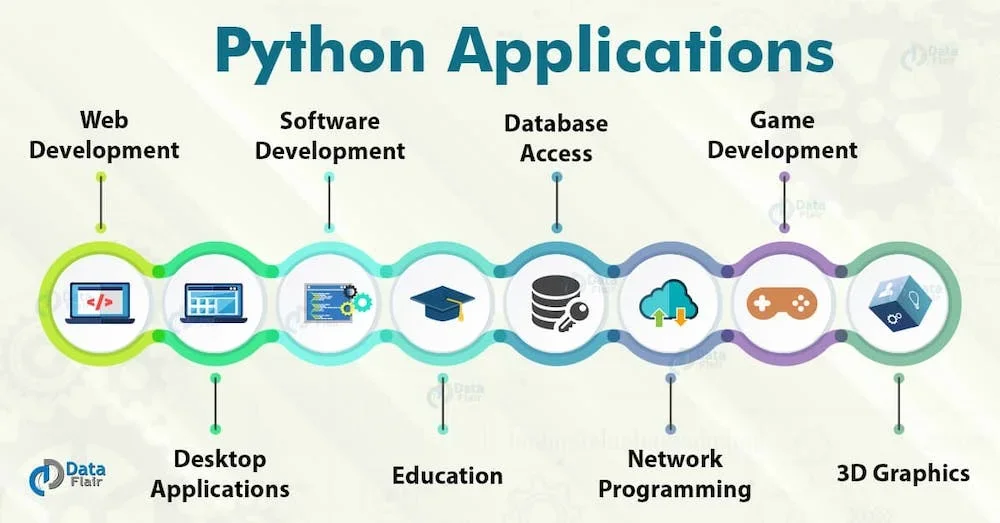
Python, the serpentine namesake language, doesn’t derive its nomenclature from zoology books but was named because its creator was a Monty Python fan. The programming language is multipurpose and has applicability anywhere that uses data, lines of code, and mathematical computation.
Python is unlike Java in that it can be used for a score of programmable requirements and isn’t confined to web development only. Similar to most other programming languages, it works in conjunction with a Python interpreter that runs the finalized lines of codes.
Whether the user is a corporate software engineer or a casual programmer, Python is the language for everyone. The internet has a plethora of free resources teaching Python, and with the language’s basis in the English syntax, it is one of the most straightforward coding languages to pick up too.
For technical-minded readers, Python is a general-purpose, modular, open-source, high-level,interpreted language. Let’s break down what each of these three characteristics means.
1. General-Purpose
A language being general-purpose means it can be deployed in multiple domains. Some of them include:
- Big Data Applications
- Automation
- Testing
- Web Apps
- Data Science
- Machine Learning
- Artificial Intelligence (AI)
- Mobile Apps
Python’s versatility in the ecosystem grants it immense leverage in any developmental environment and use cases. Today, most Android and iOS developers familiarize themselves with Python to excel at their jobs.
2. Modular
Since Python is a modular language, it lets you divide up the functions into different files. These smaller chunks can be further used with other functions and programs to expand or complement their capabilities, thus making Python integration with other technologies simple and easy. As the same piece of code can be run several times, it also helps in eliminating repetition in the code.
3. Open-Source
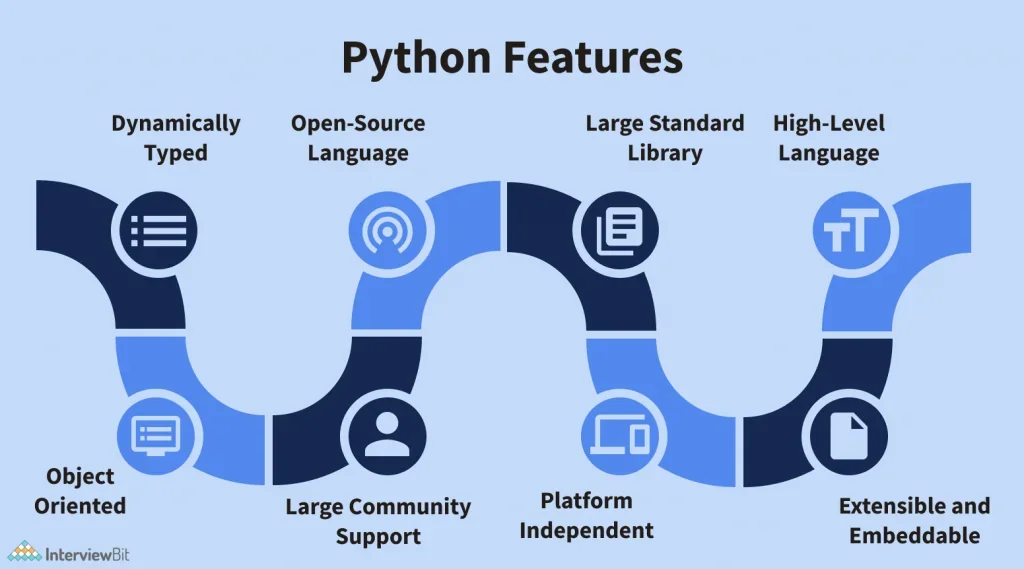
Dedicated developers work on the language to further streamline and enhance its capabilities. The Python Software Foundation reviews all proposed changes and updates and ensures the quality of the language.
4. High-Level
Python is easy to learn as it is a high-level programming language. Now, while not all high-level languages share this trait, Python does as it doesn’t require you to understand the details of the computer to develop programs efficiently.
5. Interpreted
Python is an interpreted language. Compiled languages, such as Java and C#, use a compiler to run the source code before a program executes it.
Python functions similarly, where you write Python code into a file, called source code. To execute this code file, you need to convert it into a machine language.
Versions of Python Development Language
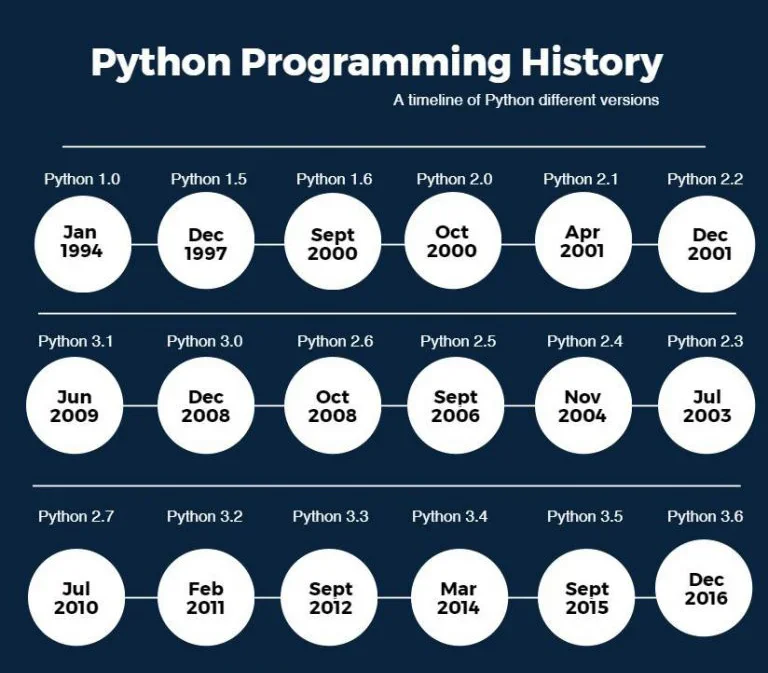
Two versions of the Python language exist: 2x and 3x. Python 2 dates back to 2000, with its latest version (2.7) running back to 2010.
Python 3 was released in 2008 and is still widely used today. For AI and machine learning projects, we recommend that developers use Python 3.
How Capable is Python Development Language?
Instagram, Spotify, YouTube, and Facebook all use Python in their development. But why?
Python is easy to work with and offers vast access to libraries with plenty of tutorials. It is also incredibly versatile and is deployable in almost all development environments.
So what kind of projects can you work on with Python?
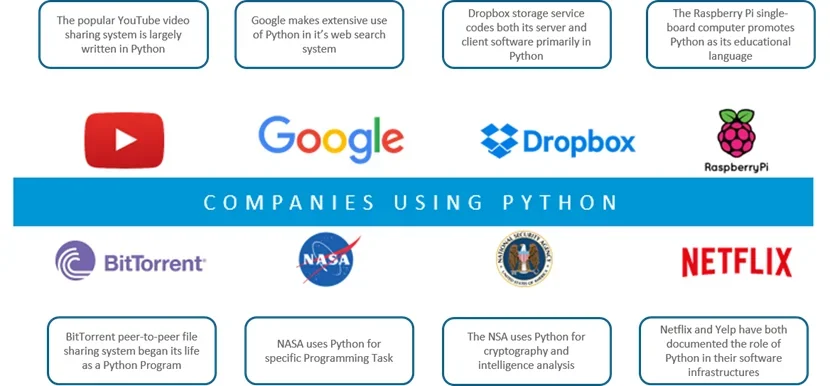
I. Machine Learning and AI
The world is obsessed with machine learning and artificial intelligence. Artificial intelligence and machine learning build the newest systems, the most intelligent software, and the quickest technologies.
Python helps break down the complex algorithms required by machine learning and AI, and due to its simplicity, developers can write reliable code. Python can also cut down project timelines considerably with its structured development environment that enables testing.
II. Web and Software Development
Python has specific frameworks used for web and software development. Django and Flask are two of the most popular ones.
These frameworks are easy to read and integrate well with other programming languages such as Java. They also feature built-in capabilities for unit testing so developers can deliver bug-free code.
Our company, Aloa, employs a vigorous vetting process when it outsources its client’s web and software development projects. Among the team of Java developers, the company also has in-house Python developers to handle software development and outsourcing.
III. Game Development
Python has excellent libraries that make it suitable for game development too. Although game development isn’t the first thing people associate with Python, Battlefield 2 and World of Tanks are two famous cases of Python utilization working well.
The Panda3D engine also enables developers working with Python to write 3D games while keeping the developmental process quick.
7 Advantages of Python Development
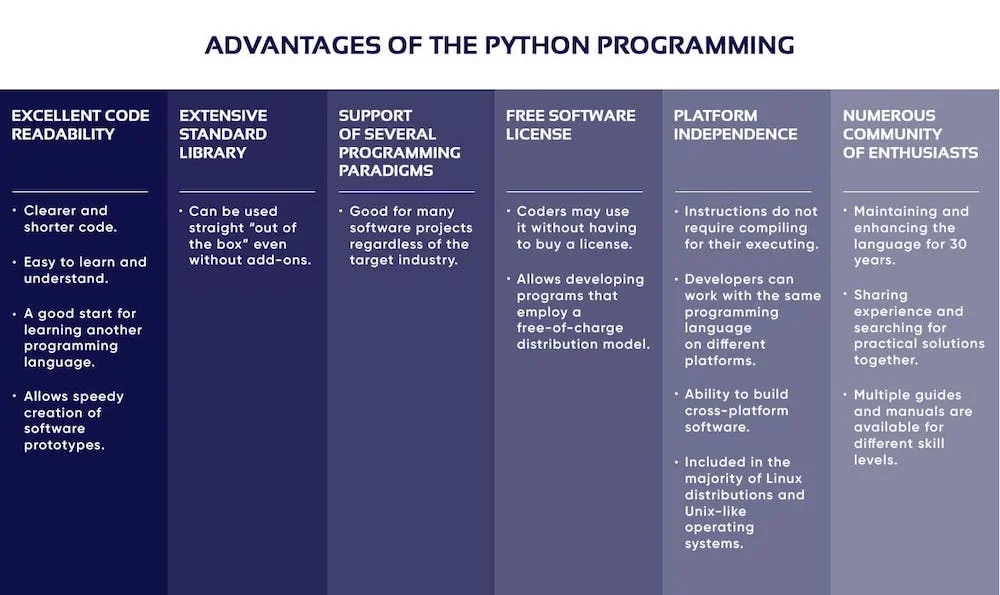
You’re probably familiar with the ins and outs of the Python language by now and why it’s all the rage these days. Let’s look at all aspects that make it compelling to learn and use in 2024.
- Easy To Use And Learn
Python is straightforward to learn. This is why it is the language most commonly recommended to beginners and new developers.
The language's development centered around its ease of use and simplicity at its core; most people don’t find it challenging to learn Python. It also features a simpler syntax which enables developers to reach a high level of proficiency faster than in the case of other backend languages.
- Has A Large Library Collection
Python has three main libraries - TensorFlow, PyTorch, and NumPy. But these are only the start of a massive collection with hundreds of options available to developers.
Regardless of what specific development is required, Python has a custom and tailor-made library for it. So if you’re specifically looking for libraries to aid in web application development or machine learning, you’ll have plenty of options!
- Portable
Python gives developers the flexibility and comfort they want in a programming language. It can run on any operating system - macOS, Windows, and Linux natively supported - and can even work with embedded systems like Raspberry Pi and Gumstix.
- Allows For Fast Development
Python development is easy, productive, and fast. It allows a greater range for developers with less code.
Rapid prototype development is possible with Python, and it also accelerates overall development. These two are significant cost-cutting measures.
- Has Community Support
Since Python is open-source, it is continuously improved by developers in its community. It keeps the technology updated and streamlined.
The language is also free and its evolution is community-driven. To put it simply, if you begin working with Python, fearing the language will be obsolete in the future is the least of your concerns.
- Has Flexible Integrations
Python can be integrated with a whole range of other languages, including PHP, HTML, Javascript, CPython, and . NET. Companies that already staff in-house and remote developers can leverage their knowledge of existing languages for Python development too.
Aloa has in-house development teams that can seamlessly work and switch between Python and other development languages during projects.
- Offers Reliable Technology
Python is proven and has already powered a lot of global apps. Facebook, Netflix, and Dropbox all leverage it in their business. Python is versatile and proven effective regardless of project complexity.
4 Disadvantages of Python Development
Python may be one of the most widely used languages, but it isn’t without its flaws. Let’s have a look at some of its shortcomings.
i. Requires More Testing
Dynamic Typing helps programmers to forgo defining types of variables which makes coding easier and faster.
The one drawback this has is critical bugs and defects can surface because the variable types are not defined explicitly. Additional testing is required to iron out these bugs.
ii. Not Native To Mobile Environments
Python isn't native to mobile, and some developers don’t perceive it as a good option for mobile computing. While there are ways to make it mobile-friendly, Android and iOS don’t support Python as an official programming language.
iii. Has High Memory Consumption
As opposed to other languages like C/C++, Python’s design demands large memory consumption while processing. This is why Python may not be the best option for developers working under stringent memory considerations.
iv. Python Modules Lack Reliable Support
Python may be the second-most loved language among developers and has an active support community, the quality of developed modules can vary. Some modules aren’t up-to-date or lack reliable support.
Python Development Frameworks
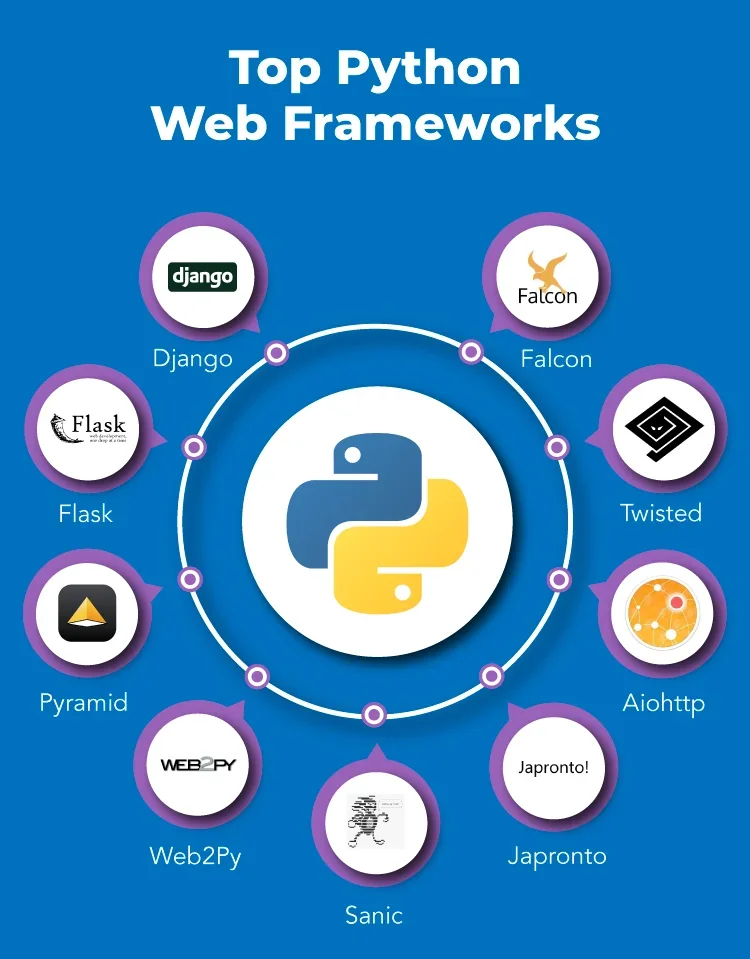
A framework serves as a foundation for any software development. Developers use these to build software for a specific platform.
Because of existing frameworks, developers do not have to start from scratch every time they begin a new project. Frameworks aren’t to be confused with an IDE (Integrated Development Environment) like PyCharm application to write and compile code.
There are several popular Python frameworks worth knowing about.
1.1 Django
Django is the most popular Python framework and is full-stack too. It means Django can be used for front-end and back-end development and is ideal for large-scale projects.
Django offers multiple out-of-the-box functionalities, for example, an Admin Panel, Generic Forms, and ready-to-use components. While it is powerful, Django enforces its own unique rules and coding style on developers.
This makes Django the ideal Python framework where code flexibility isn’t a top priority.
1.2 Tornado
Tornado is a Python web framework owned by Facebook and is similar to Django and other popular alternatives. It also has an asynchronous networking library and stands out with its focus on speed and the ability to handle large amounts of web traffic.
Tornado also has support for templates, security, user authentication, and localization. The framework boasts an active user community, and developers consider it one of the most modern Python frameworks.
1.3 Fast API
If you’re developing APIs with Python 3.6+, Fast API is the best framework as it is modern and guarantees fast performance. Some of the benefits of this framework are:
- Speed – accelerates development time by 200% to 300%.
- Reduced bugs – gets rid of 40% of human-generated errors.
- Easy – it’s simple to use and learn.
- Short – fewer bugs as it cuts code duplication to a minimum.
- Robustness – automatic interactive documentation can provide you with production-ready code.
1.4 Flask
As a Python microframework, few come close to Flask. Flask is renowned in the Python developer community for ease of use, speed, and reliability.
Since Django is ideal for large projects, using it on small and medium-sized projects would be too complex. Developers instead side with Flask as a popular choice since it provides a variety of third-party modules and is compatible with native and custom-made solutions.
These are just some of the many frameworks and microframeworks Python offers. If you’re looking to outsource your Python development requirements, Aloa is the best firm to work with since we perform a detailed analysis of your project and select the right framework for the job and the best-suited developers for the role.
Python Development Libraries
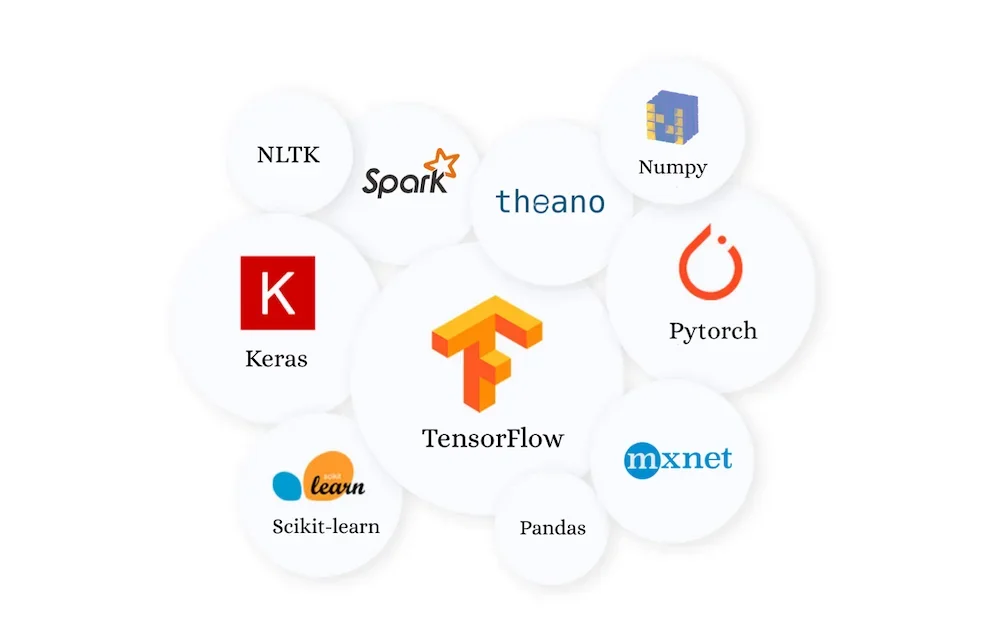
Just like frameworks, libraries are critical assets to developers as well. Python standard libraries can provide ready-to-use functions and modules that save developers a lot of time, as they can be embedded directly into the code.
With Python, developers have a wealth of libraries to choose from. Let’s discuss the top three libraries available for this programming language:
a. TensorFlow
For machine learning enthusiasts and developers, TensorFlow is the best option. Developed by Google, TensorFlow is an open-source library and is incredibly popular with many Python developers.
Many of us interact with the library daily via TensorFlow-powered services like Google Voice Search or Google Photos. The library is easily trainable, interactive, and flexible and has “dataflow graphs.”
These are structures that show the movement of data through a graph.
b. NumPy
NumPy is another library used for machine learning projects on Python. It’s popular because it’s interactive and simple.
It can even implement complex mathematical processes quickly and easily. It is also one of the only libraries that are easy to work with, even for developers who have no previous experience working with libraries.
c. PyTorch
Developed in 2017, PyTorch is a Python-native library and is immensely popular among machine learning developers and researchers. Most developers cite PyTorch as the most significant alternative to Google’s TensorFlow library.
Developers love the library because of its ease of use, intuitiveness, and simple API implementations. Compared to TensorFlow and other libraries, it is also the most popular library for new developers.
What Is A Python Interpreter?
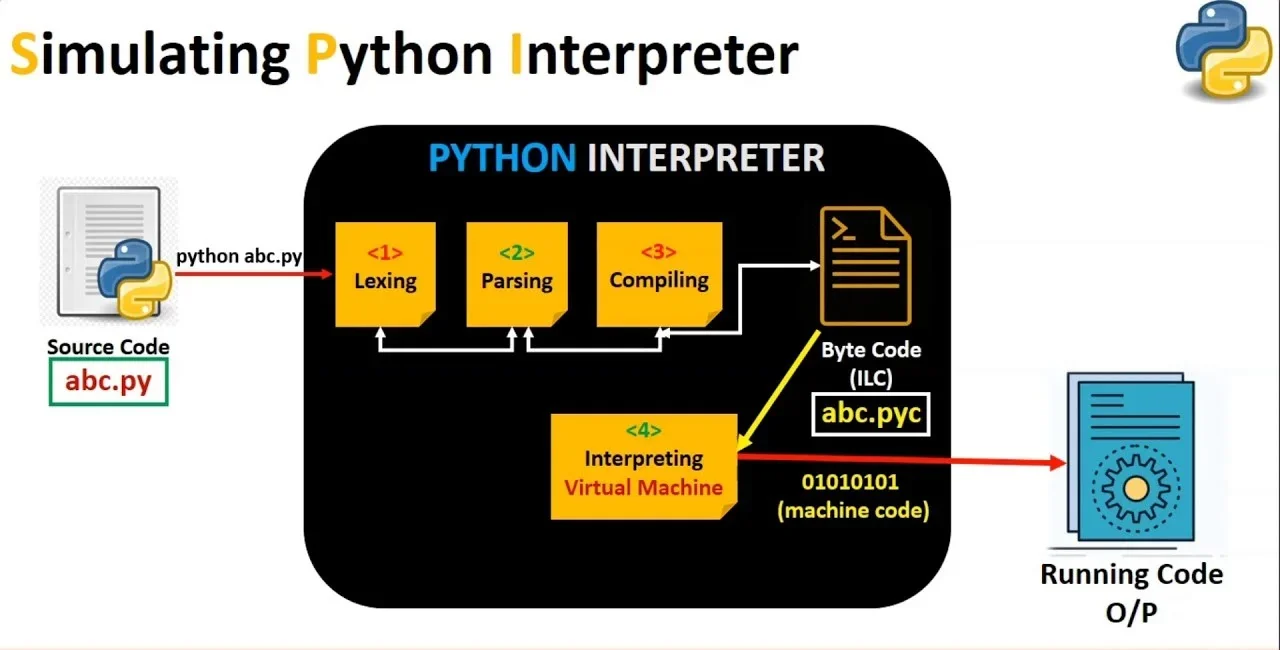
Finally, we take a look into the responsibilities of the Python interpreter. As Python is an interpreted language, it requires a program that parses, processes, and executes code.
The interpreter is responsible for performing this job. These are essential for running scripts and without them, source code would be simple plain text, not an executable program.
Is Python Development The Best Choice For You?
Python is only increasing in popularity and adoption. As more people turn to it for its ease of use, rapid development, easy debugging capabilities, and shallow learning curve, the programming language will be a dominant force in the future.
Here’s a rundown of why you need to develop your net project with Python:
- It’s user-friendly - has a simple syntax
- You can install Python for free and get learning or develop immediately
- It has thousands of libraries and plenty of robust frameworks and dictionaries
- It has a shallow learning curve, and there are hundreds of educational resources and documents online
- It can handle multiple data types when deployed for artificial intelligence and machine learning uses
Perhaps the most prominent advantage Python has is that it is a general-purpose language. It means it is versatile and can satisfy various developmental needs.
Python is deployed across different projects. These are typically web development, gaming, blockchain, fintech, and many others.
And with a developmental pedigree in Facebook, Spotify, Instagram, and Netflix, Python is already well-established and highly sought after as a skill. If your top priority is the speed of development, ease of use, and versatility, Python may be the answer.
Conclusion
So there you have it.
An in-depth introduction to Python and what makes this language a goliath in the industry. Following this guide will help you make an informed decision on whether Python is the next language to learn or to develop your next project in.
Developing a Python-based project from the ground up can be a daunting task but Aloa takes the stresses away from you. We can help shortlist the finest Python development teams that can build your next project for you.
Want to know more about Python development project outsourcing? Get in touch with us at [email protected], and we'll take care of everything for you.

